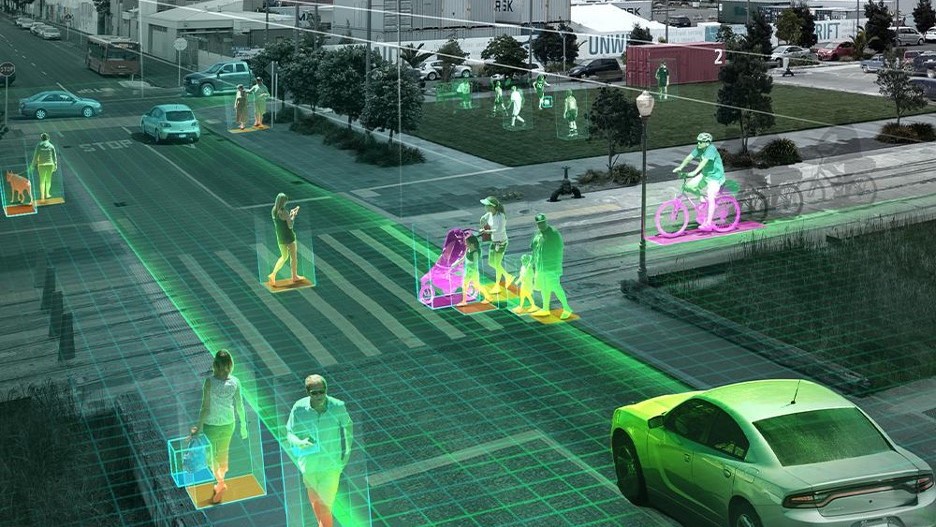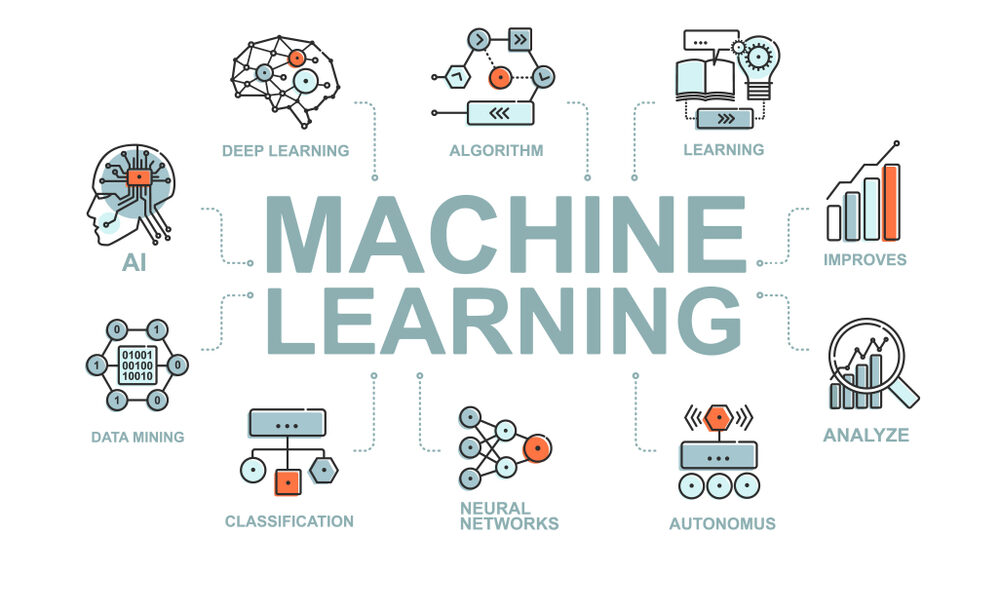Artificial Intelligence is less than a single technology. It covers a broad spectrum of disciplines, each designed to solve a particular category of business problems. Among the most widely adopted ar...
Artificial Intelligence is less than a single technology. It covers a broad spectrum of disciplines, each designed to solve a particular category of business problems. Among the most widely adopted are Machine Learning and Computer Vision. They are often mentioned in the same conversations, yet serve different purposes.
Machine Learning is the broader foundation; it equips systems to learn from structured and unstructured data and to make predictions that improve business decisions. Computer Vision, in turn, is a specialized branch that applies these learning methods to visual information: images, video, or sensor data. Where Machine Learning answers questions like "What is the probability of equipment failure?", Computer Vision development systems address challenges such as "Does this product meet quality standards?"
Let's break down what Computer Vision vs Machine Learning mean in an enterprise context, explore where each delivers the most impact, and see how they often work best when combined.
Artificial Intelligence systems are designed to interpret information, reason, and act in ways that approximate human decision-making. Still, they can do so at speeds and scales that far exceed human capacity. AI is not a single technology but an extended term for various methods and subfields. These include Machine Learning (ML), Natural Language Processing (NLP), Computer Vision (CV), robotics and automation, generative AI models, and others.
Read also about the difference between generative AI vs Machine Learning
Computer Vision vs Machine Learning hold distinct yet interconnected roles within this landscape. Let's define what Machine Learning offers to enterprises.
Computer Vision is a specialized field within AI that focuses on enabling machines to interpret and act on visual data such as images, video streams, and sensor outputs. While it builds on ML techniques, its scope is narrower and deeper: extracting meaning from visual inputs and translating them into decisions or actions. Computer Vision systems use advanced algorithms to recognize, classify, and analyze visual patterns. The capabilities of Computer Vision typically fall into a few key areas.
Discover in detail the distinctions between machine vision vs computer vision
Computer Vision addresses challenges wherever visual inspection, monitoring, or interpretation is critical in enterprise operations. CV systems don't replace human observation but extend it across vast volumes of data and environments that would otherwise be impossible to monitor consistently. Let's discover the most practical Computer Vision use cases.

One of the most persistent problems in manufacturing is ensuring consistent quality across large production volumes. Computer Vision in supply chain automates this process by detecting defects, irregularities, or product deviations. Beyond identifying visible flaws, advanced models can monitor predictive quality, highlighting issues before they escalate into larger problems.
Enterprises across industries face increasing pressure to ensure safe working environments and comply with regulatory standards. Computer Vision enhances safety by continuously monitoring operations in real time. In logistics and heavy industry, it can track adherence to safety protocols such as helmet or vest usage. CV in healthcare facilities assists in monitoring patients and alerting staff to emergencies.
Modern transportation networks require visibility into vehicle movement, traffic flow, and driver behavior. Computer Vision provides the foundation for intelligent mobility by interpreting live video feeds and sensor data. Traffic management systems use it to optimize signal timing and reduce congestion. Autonomous vehicle development relies on Computer Vision for real-time recognition of road signs, pedestrians, and other vehicles.
Retailers, banks, and service providers increasingly rely on Computer Vision to understand and improve customer interactions. In physical stores, it powers cashier-less checkout systems that identify items automatically. In customer analytics, vision systems analyze in-store behavior, providing insights into dwell time, product interest, and traffic patterns.
Machine Learning is a branch of Artificial Intelligence focused on building algorithms that learn from data and improve performance without requiring explicit programming. Unlike traditional systems that rely on predefined rules, ML models evolve with the data exposed. Machine Learning systems perform a set of fundamental tasks that underpin many enterprise applications:
Defining the benefits of Machine Learning is its ability to work with different types of data. It can process structured data, such as transactional records, business tables, or sensor readings from connected devices, where consistency and volume enable precise modeling. At the same time, it is equally effective in analyzing unstructured information, including free text, customer feedback, audio files, and system logs, which often hold critical but harder-to-extract insights.

This breadth of applicability allows Machine Learning to address various business challenges, from operational efficiency to customer engagement, across industries such as finance, healthcare, logistics, and retail.
How can companies prepare for demand shifts, supply chain disruptions, or financial volatility before they occur? Machine Learning in supply chain and other industries makes this possible by analyzing historical and real-time data to predict future trends. Manufacturers can plan production more effectively, retailers can anticipate seasonal peaks, and financial institutions can improve revenue and risk forecasts.
By analyzing behavioral data, ML tailors recommendations, adjusts pricing dynamically, and delivers targeted marketing campaigns. ML solutions in ecommerce improve conversions; in telecom and media, they reduce churn by aligning services with customer expectations.
Machine Learning automates manual oversight processes and continuously improves them. In manufacturing, ML can detect defects on production lines in real time, cutting waste and downtime. ML algorithms in healthcare speed up diagnostic imaging and triage, allowing clinicians to focus on critical cases.
Executives often face decisions involving complex variables and incomplete information. Machine Learning enhances decision support systems by spotting early warning signals and uncovering hidden patterns. In energy, predictive maintenance identifies equipment issues before they escalate.
While these applications highlight the breadth of Machine Learning, many of them achieve enterprise-grade accuracy and scalability only because of deep learning. Deep learning has become the engine that powers general Machine Learning vs Computer Vision systems.
While traditional ML models rely on feature engineering and predefined rules, deep learning leverages multi-layered neural networks to automatically extract patterns and representations from massive datasets.
Read about which one to choose for your needs: Deep Learning vs Machine Learning
Within Machine Learning, deep learning addresses limitations of scale and adaptability. It allows systems to process unstructured and multimodal data at unprecedented volume without requiring manual feature design. At the same time, Computer Vision has advanced rapidly because of deep learning, particularly through convolutional neural networks (CNNs) and related architectures. These models enable automated recognition of shapes, patterns, and spatial hierarchies within visual data.
Deep learning deserves attention in the context of Computer Vision vs Machine Learning because it is the technological bridge that enables both fields to deliver high-quality results. Without deep learning, Computer Vision would remain limited to basic recognition tasks, and Machine Learning would struggle to scale across the diverse and complex datasets enterprises generate today.
Machine Learning is the broader discipline, capable of working with almost any type of enterprise data: financial transactions, customer behavior, operational metrics, text, or images. It answers questions such as: Which customers are most likely to churn? What is the optimal inventory level for next quarter? Its reach extends across functions, so ML projects often involve multiple departments at once, from finance and marketing to operations.
Computer Vision, by contrast, is much more specialized. It focuses on visual intelligence, turning images, video, and sensor feeds into structured information. Its projects are usually embedded deep inside operational workflows: factories, logistics centers, hospitals, or retail stores, where visual inspection or monitoring is integral.
Another difference lies in the data each technology consumes. Machine Learning can be applied to any dataset, whether structured or unstructured. Computer Vision, however, is built for visual and spatial data. This feature makes CV implementation extremely effective for use cases like defect detection or medical image analysis, but less applicable to domains where visual data is not the primary driver of value.
Machine Learning is dedicated to discovering patterns in data and using them to make predictions. It powers demand forecasting, fraud detection, churn modeling, or supply chain optimization. Computer Vision is built toward interpreting the physical world, identifying defects on a production line, monitoring compliance on a construction site, or recognizing people and objects in real time.
Another distinction between Computer Vision vs Machine Learning lies in processing speed. Many Machine Learning applications churn prediction, fraud detection, or revenue forecasting) can run in batch or micro-batch modes, where predictions are delivered periodically rather than instantly. Computer Vision, however, is often deployed in contexts where a real-time or near-real-time response is mandatory.
From a return-on-investment perspective, Machine Learning delivers broad advantages because it applies across many functions. Its benefits build over time as more models are deployed across departments, driving efficiency, accuracy, and personalization. While narrower in scope, Computer Vision often delivers immediate and concentrated value where visual data dominates. Automated inspections, driver monitoring, medical diagnostics, or cashier-less checkout fundamentally change how processes run and can create measurable savings, improving safety, compliance, and customer experience.
Computer Vision is built on Machine Learning techniques such as supervised learning, neural networks, and deep learning. In practice, CV systems cannot function without ML at their core. Machine Learning provides the algorithms and training methods that allow CV to recognize patterns in visual data, while computer vision applies those methods to images, video, and sensor streams. Still, ML is the foundation for predictive analytics, optimization, and personalization across the business.

The most impactful applications arise when CV and ML are deployed as a single system.
Integrating Computer Vision with Machine Learning produces multi-layered intelligence. Rather than operating in isolation, the two technologies strengthen each other. In one of our partnerships, we modernized a global logistics platform by integrating Machine Learning and Computer Vision. CV algorithms track packages and detect damage in real time, while ML models predict warehouse load and optimize inventory across more than 400 warehouses worldwide. Together, these capabilities streamline logistics, reduce operational overhead, and enable intelligent scaling across 60+ countries.
Industry leaders such as Bosch, Siemens, eBay, Inditex, CircleCI, Crédit Agricole, TotalEnergies, AVL, Innovation Group, Questrade, First Student, and ZIM rely on Mind Supernova to deliver Computer Vision, data-driven, and AI, ML solutions. These long-term partnerships demonstrate our ability to address complex challenges across manufacturing, automotive, finance, retail, energy, logistics, and healthcare. Our track record includes: